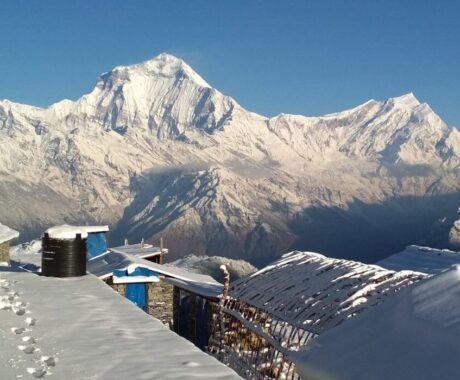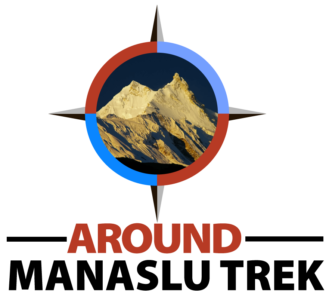Rolwaling – Tashi Lapcha Pass
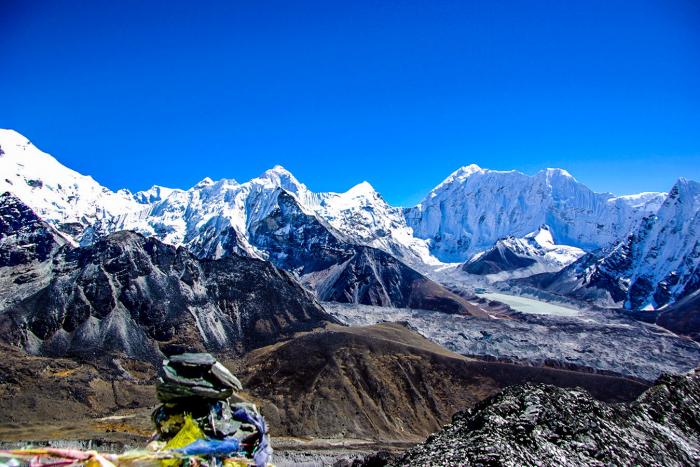
Trip Facts
Trip Highlights
- One of the best hikes off the beaten path
- Completely supervised hike supported by sherpas and porters
- Lakes, mountains, monasteries, and a rich cultural heritage
- Go across the Tashi Laptcha Pass to reach the Everest area
- Wander through forests filled with rhododendron
- Gorgeous vistas of numerous peaks, including Mt. Everest, Mt. Gauri Shankar, and Mt. Kanchenjunga
- Cross the villages of Dingboche and Thukla
- Climb to the difficult Tashi Lapcha Pass
- Observe the Numbur Himal range up close and take in more
- Discover the culture and fervor of Tibetan Buddhism held by the Sherpas
Introduction
Discover the untamed beauty of the Rolwaling -Tashi Lapcha Pass Trek, a gem tucked away in two stunning Himalayan regions: Rolwaling and Upper Khumbu. This journey weaves through twin valleys, each boasting its own distinctive charm and breathtaking panoramas.
The trail takes you through the heart of Khumbu, the birthplace of renowned mountain climbers, before leading you into the wilderness of Rolwaling. Here, the captivating sight of Himalayan thars, Musk deer, and other rare wildlife awaits amidst the lush forests adorned with rhododendrons, pines, and oaks.
Embark on this expedition with the necessary permits for the Gauri Shankar Conservation Area, Sagarmatha National Park, and local jurisdictions, ensuring a seamless adventure. Your journey culminates with a visit to the tranquil Tsho Rolpa Lake, nestled at an altitude of 4600 m in Rolwaling, a sight that is sure to etch itself into your memory.
Come, let the Rolwaling-Tashi Lapcha Pass Trek ignite your adventurous spirit and treat you to an unforgettable Himalayan experience.
Outline Itinerary
Day 01: Arrival Kathmandu and Pick up to hotel – 1,300m
Day 02: Kathmandu Day sightseeing – 1,300m
Day 03: Drive from Kathmandu to Sheghate 1,300m – 08 hrs
Day 04: Trek to Jagat 1,400m – 09 hrs
Day 05: Trek to Simigaou 2,600m – 06 hrs
Day 06: Trek to Daldung 2,900m – 05 hrs
Day 07: Trek to Beding 3,500m – 05 hrs
Day 08: Rest day in Beding 3,500m – 06 hrs
Day 09: Trek to Na 4,200m – 06 hrs
Day 10: Rest Day Na – 4,200m
Day 11: Trek to Tsho rolpa lake – 4,900m
Day 12: Rest day in Lake – 4,900m
Day 13: Trek to Tashi lapcha Phadi Vai over pass – 5,755m
Day 14: Trek to Tashai Camp 4,900m – 06 hrs
Day 15: Trek to Thame 3,800m – 06 hrs
Day 16: Rest day Thame 3,800m – 06 hrs
Day 17: Trek to Namche – 3,450m
Day 18: Trek to Lukla 2,810m – 08 hrs
Day 19: Fly from Lukla to Kathmandu 1,300m – 30 min
Day 20: Rest day in Kathmandu – 1,300m
Day 21: Departure from Kathmandu airport – 1,300m
Alternative Treks Around Rolwaling – Tashi Lapcha Pass
The Rolwaling – Tashi Lapcha Pass Trek is an incredible journey through rugged landscapes, high-altitude glaciers, and remote Himalayan wilderness. If you’re drawn to its mix of adventure, challenging terrain, and breathtaking scenery but want to explore other similar options, here are some fantastic alternatives:
- Mera Peak Climbing – 17 Days: A thrilling climb offering stunning views of Everest, Makalu, and other major peaks, perfect for those looking to push their limits at high altitudes.
- Everest Base Camp & Lobuche Peak Climbing – 18 Days: A combination of trekking to Everest Base Camp and climbing Lobuche Peak, providing a perfect blend of adventure and breathtaking views.
- Everest Base Camp Helicopter Tour – 1 Days: For a less strenuous yet spectacular experience, this helicopter tour offers an incredible aerial view of the Everest region, including Base Camp, without the physical challenge.
Detailed Itinerary
-
Day 1: Arrival Kathmandu Pick up to hotel - 1,300m
Altitude: 1300mMeals: BreakfastAccommodation: 5 star hotel in Kathmandu -
Day 2: Kathmandu Day sightseeing - 1,300m
Altitude: 1300mMeals: BreakfastAccommodation: 5 star hotel in Kathmandu -
Day 3 : Drive from Kathmandu to Sheghate 1,000m - 08 hrs
Altitude: 1000mMeals: Breakfast / lunch / DinnerAccommodation: Tea house -
Day 4: Trek to Jagat 1,500m - 07 hrs
Altitude: 1500mMeals: Breakfast / lunch / DinnerAccommodation: Tea house -
Day 5: Trek to Simigaou 2,000m - 06 hrs
Altitude: 2000mMeals: Breakfast / lunch / DinnerAccommodation: Tea house -
Day 6: Trek to Daldung 2,900m - 05 hrs
Altitude: 2900mMeals: Breakfast / lunch / DinnerAccommodation: Tea house -
Day 7: Trek to Beding 3,700m - 05 hrs
Altitude: 3700mMeals: Breakfast / lunch / DinnerAccommodation: Tea house -
Day 8: Rest day in Beding 3,700m - 06 hrs
Altitude: 3700mMeals: Breakfast / lunch / DinnerAccommodation: Tea house -
Day 9; Trek to Na 4,200m - 06 hrs
Altitude: 4200mMeals: Breakfast / lunch / DinnerAccommodation: Camping -
Day 10: Rest Day Na - 4,200m
Altitude: 4200mMeals: Breakfast / lunch / DinnerAccommodation: Camping -
Day 11: Trek to Tsho rolpa lake 4,800m - 07 hrs
Altitude: 4800mMeals: Breakfast / lunch / DinnerAccommodation: Camping -
Day 12: Rest day in Lake - 4,800m
Altitude: 4800mMeals: Breakfast / lunch / DinnerAccommodation: Camping -
Day 13: Trek to Tashi lapcha Phadi Vai over pass 4,800m / 5,755m - 08 hrs
Altitude: 4600mMeals: Breakfast / lunch / DinnerAccommodation: Camping -
Day 14: Trek to Tashai Camp4,400m - 06 hrs
Altitude: 4400mMeals: Breakfast / lunch / DinnerAccommodation: Camping -
Day 15: Trek to Thame 3,850m - 06 hrs
Altitude: 3850mMeals: Breakfast / lunch / DinnerAccommodation: Tea house -
Day 16: Rest day Thame 3,800m - 06 hrs
Altitude: 3850mMeals: Breakfast / lunch / DinnerAccommodation: Tea house -
Day 17: Trek to Namche 3450m - 05 hrs
Altitude: 3450mMeals: Breakfast / lunch / DinnerAccommodation: Tea house -
Day 18: Trek to Lukla 2,810m - 08 hrs
Altitude: 2800mMeals: Breakfast / lunch / DinnerAccommodation: Tea house -
Day 19: Fly from Lukla to Kathmandu 1,300m - 30 min
Altitude: 1300mMeals: Breakfast / lunch / DinnerAccommodation: 5 star hotel in Kathmandu -
Day 20: Rest day in Kathmandu - 1,300m
Altitude: 1300mMeals: BreakfastAccommodation: 5 star hotel in Kathmandu -
Day 21: Departure Kathmandu airport - 1,300m
Altitude: 1300mMeals: Breakfast
What's included
- International Airport pick up and drop by private jeep
- 3 Nights 5 star Hotel accommodation in Kathmandu (with breakfast included)
- An Experience English speaking guide and porter (1 porter for every 2 trekkers)
- All Meals and Teahouse accommodation during the trek with attach deluxe room
- Kathmandu Valley Sightseeing with private jeep and tour guide (Local Monuments entrance fee included)
- Kathmandu to Lukla Sharing Helicopter Flight (Round Trip)
- All required trekking permits (National Park Entry Fee and Pasang Lhamu Rural Municipality Entry Fee)
- Guide and porter insurance with food and accommodation
- Basic Medical kits
- Sleeping and duffel bag, down jacket, trekking poles (should be returned after the trek)
- Welcome and farewell dinner
- Emergency Helicopter Evacuation Service Arrangement Only (should cover by your travel insurance)
- All required paper works and government taxes
- RP Adventures T-shirt.
What's not included
- International Flight
- Nepal Travel Visa Fee
- Personal Medical and Travel insurance (Should cover helicopter evacuation)
- Guide, Porter and Driver tips
- Personal Gears (equipment)
- Personal bill
- Lunch and Dinner in Kathmandu
- All other personal expense of beverages (hard and soft drinks)
- All other things not mentioned in the inclusion
Trekking Gears
To ensure a safe and comfortable trek in the Himalayan region, it is highly recommended to bring the appropriate equipment and gear to cope with the cold temperatures. The following is a list of essential equipment and gear, which can be purchased either in the Thamel market or brought from your home country:
Baggage
- 70-100 liters Duffle bag
For trekking and expeditions, a duffel bag is essential to pack all kinds of trekking equipment. Duffel bags come in various sizes, ranging from 60 liters to 100 liters. There are different brands available, such as The North Face, Sonam, Sherpa, Rab, and Everest Hikes. You can purchase these bags both online and offline in your homeland or in Kathmandu, particularly in Thamel's trekking shops. The cost varies depending on the brand, ranging from $15 to $100.
- Water proof day pack 30-40 liters
For hiking and trekking, you can choose from various brands of day bags. We recommend a 30 to 45-liter waterproof, strong, and good-quality day bag. Prices range from $40 to $200, depending on the brand and quality. You can purchase it in your homeland or buy it at the Thamel market (a trekking shop). Typically, this bag is used for day hiking and carries toiletries, emergency medical supplies, snacks, a water bottle, a jacket, warm shirts/t-shirts, a hat, trekking poles, and gloves.
Rain, wind, and snow are common in trekking areas. Typically, to avoid rain, we use a poncho, which also helps keep our body, clothes, and day pack dry. The cost of a raincoat is $10 to $50, depending on the quality, and it can be found in Thamel (a trekking shop). Alternatively, if possible, you can bring one from your own source.
- Power Bank / Trekking Solar
In the Himalayas, a trekking area, electricity is limited due to a small hydro power station. Sometimes, the electricity may not work, and often solar panels are used in most places. If the day is not sunny, then solar panels may not work. In that case, we can use our own backup to charge electronic devices. The quality makes the price vary from $50 up to $150. You can buy it in a Kathmandu trekking shop, or you can bring it on your own.
- Water Filter
During mountain treks, it is essential to stay hydrated by drinking either hot or cold water. The mountain water is robust and rich in minerals. Having a water filter machine allows you to filter this water. This is not only environmentally friendly but also cost-effective, as plastic bottled water can be expensive. The price range for water filters is $50 to $100, depending on the brand. You can purchase one in your own country or buy it at a Thamel trekking shop.
- Sleeping bag (comfort rated _20)
Normally, we use a sleeping bag during camping trekking and teahouse trekking. In teahouses, we are provided with blankets, but during the busy season, the blankets may not be sufficient. That's why we highly recommend owning a sleeping bag. Sleeping bags come in different types, ranging from -5 degrees to -30 degrees, and they vary in price. If you choose to buy a local Nepali product, the cost may not be expensive, ranging from Rs 5000 to Rs 20000. However, if you prefer a brand like The North Face, Sonam, Sherpa, or RAV, the cost can range from $200 to $1000. You can purchase them online or offline.
In Nepal, you have the option to rent or buy a sleeping bag. If you opt for a trekking package, the organizer will arrange sleeping bags based on different trekking areas.
- Head torch
During our Himalaya trekking, we ventured into remote areas where electricity and lighting systems were scarce, even in teahouses and high passes such as Thorang Pass, Larkey Pass, and the three high passes. In these places, especially during nighttime trips to the toilet or while crossing high passes, a headlight is essential. Headlights come in different types, including a normal one, one with a battery, or another with an electric source, ranging in cost from $10 to $50. You can purchase them online or offline, either from trekking shops in Thamel or in your home country.
- Water bottles 1 lit 2
During Himalayan trekking, it is advisable to carry two types of bottles: a 1-liter small thermos for hot water, tea, or coffee, and another 1-liter bottle for regular drinking water. The prices for these bottles range from $7 to $50. You can purchase them at Thamel trekking shops or in your home country. In Nepal, these bottles are available both online and offline.
- Sun glass (100% up protection)
During Himalayan hiking and trekking, it is essential to have sunglasses that provide protection against dust, wind, snow, cold, and heat. Different weather conditions require different types of sunglasses. We highly recommend reputable brands for sunglasses, with prices ranging from $10 to 200%. These sunglasses are readily available both online and offline. You can conveniently purchase them from trekking shops in Kathmandu Thamel or from retailers in your own country.
Clothing Essential
- Water proof jacket
During Himalaya hiking and trekking, where you may encounter rain, wind, cold, heat, dust, and snow, it is essential to invest in a high-quality waterproof jacket for protection. Various brands offer reliable options, such as The North Face, Sherpa, Sonam, Black Diamond, and RAB, with prices ranging from $100 to $500. These jackets are available for purchase both online and offline. You can find them at The Kathmandu Thamel trekking shop or in stores in your own country.
- Warm down jacket
During the trekking, we need a down jacket for cold places. We highly recommend a local or international brand depending on your budget. The cost will start from $5 and can go up to $1000. The recommended brands are "The North Face, Sonam, Black Diamond, Sherpa," which you can buy from your home country or in Kathmandu Thamel trekking shops. They are available both online and offline.
- Warm jumper
When reaching the teahouses during Himalayan treks, it is advisable to change into warmer clothes. We highly recommend bringing a jumper, and there are both local and international brands available, depending on your budget. Prices start from $30 to $120. If you already have one, that's fine; otherwise, you can purchase it in Nepal from the Thamel market, both online and offline.
- Trekking trousers
During Himalaya trekking, it is essential to have waterproof trousers to protect against rain, wind, dust, cold, and snow. We highly recommend choosing a brand based on your budget, with prices ranging from $20 to $150. Some notable trekking trouser brands include "The North Face," "Sonam," "Black Diamond," and "RAB." These trousers can be purchased both online and offline. If you already have them, you can bring them along; otherwise, you can purchase them at the Nepal Thamel Market.
- Base layer shirts
Normally, during Himalayan trekking, we use base layer shirts to protect ourselves from wind, dust, sun, and rain while hiking. There are both local and international brands available, with costs ranging from $20 to $120. You can purchase them either online or offline. If you already have one, you can bring it with you; otherwise, you can buy it at a trekking shop in Nepal.
- Thermosets
During Himalayan trekking, the trekking areas can be extremely cold. We highly recommend purchasing a set of thermal clothing. There are both local and international brands available, such as The North Face, Sonam, Sherpa, Black Diamond, Kathmandu, and Everest. The cost can range from $50 to $250, and you can find these sets both online and offline. If you already have a set, you can use that; otherwise, we recommend buying one in Nepal, specifically at the Thamel market.
- Sunhat/warm hat/beanie
During Himalayan trekking and hiking, it is advisable to wear a sun hat to protect yourself from the sun. Additionally, when feeling cold, you can use your own woolen hat. We highly recommend purchasing either local or international brands, with prices starting from $5 and going up to $25. You can find these hats in the Thamel market in Nepal.
- Scarfs
During Himalayas trekking, it is essential to protect your neck, ears, mouth, and nose. We highly recommend purchasing different types of scarves, which are available in Nepal Thamel trekking shops. Prices start from $3 and go up to $25.
- Hiking boots
During Himalayan hiking and trekking, the most crucial equipment is footwear, particularly trekking boots. These boots are essential for safeguarding your ankles, ensuring safe walking, and being physically and mentally prepared for the trek. We highly recommend purchasing internationally recognized waterproof shoe brands such as Salomon, Hoka, Lowa, and Marmot. The cost typically starts from $150 and can go up to $400. You can find these brands in both Europe and Asia, including the Kathmandu Thamel market.
- Trekking socks / liner sock/heavy mountaineering socks
During Himalaya hiking and trekking, it is essential to have different types of socks depending on your budget. We highly recommend investing in trekking socks, with prices ranging from $3 to $30. There are both local and international brands available, and you can purchase them in Kathmandu's Thamel market.
- Thermal gloves / warm / water proof gloves
During Himalayas trekking, when we experience cold weather, we use different kinds of gloves. Some gloves are thin, while others are waterproof. We highly recommend buying them, with prices starting from $10 and going up to $50, depending on your budget.
- Sun protection / Lip Gaurd
During Himalayan hiking and trekking, we encounter various weather conditions such as sun, snow, cold, and dust, which can dry out the skin and lips. In such situations, it is essential to use protection, especially if you have sun allergy. We highly recommend purchasing lip balm and sunscreen, with costs ranging from $1 to $30. These products can be bought at trekking shops in Thamel, Kathmandu.
- Wash bag toiletries
During Himalayan hiking and trekking, we consistently rely on nature for various needs. For long toilet breaks, it is essential to carry toilet paper. Whether at tea houses or during the trek, having a good quality toilet paper is crucial. We highly recommend purchasing it from Thamel trekking shops, where the cost ranges from $1 to $2.
- Antibacterial hand wash
During Himalayan hiking and trekking, where access to washing towels or hot water is limited, it is recommended to purchase wet paper. The cost starts from $2 and can go up to $8 at medical shops in Thamel.
- Travel towel
During Himalayan hiking and trekking, the hotels are not luxurious; they are based on local standards. It is advisable to carry both a large and a small towel for drying the face and body. These items can be purchased at trekking shops in Thamel, with prices ranging from $2 to $20.
- Small pad lock to lock your bag
While hiking and trekking in the Himalayas, our duffel bag is carried by the porter. It is advisable to secure all your equipment inside the bag with a lock. We highly recommend purchasing a small lock, with costs ranging from $1 to $5, which can be found in Kathmandu's trekking shops.
- Medical Kits
During Himalayas hiking and trekking, most of the time, we are in remote areas and need to carry a basic medical kit with us. The emergency primary medicines we should have depend on our needs. You can buy them at a medical shop in the Thamel market. The basic first aid kit should include antiseptic cream, throat lozenges, diarrhea treatment (like loperamide), altitude sickness medication (such as acetazolamide), painkillers, insect repellent, plasters, blister treatment, insect repellent, and rehydration salts like Dioralite. Additionally, it's advisable to carry glucose tablets and multi-vitamin tablets.
- Trekking pole / Sleeping bag liner / Travel clothes / Camera / Pen knife
Normally, when getting ready for Himalayan hiking and trekking, both physically and mentally, it's
essential to have trekking poles. They provide support for another leg, and there are various types available. We highly recommend investing in a good quality pole.
Inside your sleeping bag, a liner is necessary to keep warm. Before and after trekking, comfortable city clothes are essential. You can use your old ones or opt to buy new ones depending on your preference.
During the trek, capturing different angles and views with a good camera is crucial. You can use your existing one or invest in a new camera based on your budget.
In case of emergencies or for general use during the trek, it's advisable to have a Swiss small knife. You can purchase all these items at Thamel trekking shops.
What Not To Pack?
- Jewelry and valuables things, Heavy zoom lenses for your camera, Too many cotton clothes/ more than one pair of jeans, Bulky towels
During Himalayan tours, including activities such as hiking, trekking, peak climbing, and expeditions, we strongly advise against bringing items such as jewelry, gold, excessive cash, large cameras, too many cotton clothes, thick towels, etc.
FAQs of Rolwaling – Tashi Lapcha Pass
-
1. What is the Rolwaling Tashi Lapcha Trek?
It’s one of Nepal’s most off-the-grid adventures! You start by wandering through the peaceful and remote Rolwaling Valley, then take on the dramatic Tashi Lapcha Pass at 5,755 meters to enter the Everest region. The whole experience is wild, raw, and perfect for anyone looking for a serious trekking challenge mixed with stunning nature. -
2. Where does the trek start and end?
The trek usually begins from Gongar or sometimes Charikot in the Dolakha region. From there, the trail takes you through the remote Rolwaling Valley and over the Tashi Lapcha Pass, eventually ending in Lukla. -
3. How many days does it take?
The trek usually takes around 18 to 22 days, but it really depends on your pace, how well you acclimatize, and whether you plan to add any side hikes along the way. It’s a long journey, so it’s best to give yourself enough time to enjoy it without rushing. -
4. Is this trek considered difficult?
Yes, it’s definitely one of the more strenuous treks in Nepal. You’ll be dealing with high altitudes, glacier crossings, and some technical sections that require careful footing and stamina. -
5. Do I need mountaineering experience?
It’s definitely helpful. You don’t have to be a hardcore mountaineer, but you should know how to handle basic gear like crampons, ropes, and an ice axe. That knowledge is key when you’re crossing the Tashi Lapcha Pass safely. -
6. Can I do this trek without a guide or Sherpa?
No, you can’t. This is a restricted area, and having a licensed guide or climbing Sherpa is mandatory. But more than that, their experience is key—they help you stay safe, manage the tough sections, and take care of permits and logistics along the way. -
7. What permits will I need?
You’ll need a few permits to do this trek: the Gaurishankar Conservation Area Permit (GCAP), the Sagarmatha National Park Permit, a TIMS card (which stands for Trekkers' Information Management System), and a Restricted Area Permit for the Rolwaling region. Don’t worry too much about the paperwork—your guide will usually take care of all this for you. -
8. How high is the Tashi Lapcha Pass?
It tops out at 5,755 meters—that’s about 18,881 feet. So yeah, it’s way up there and you’ll definitely feel the altitude. -
9. When’s the best time to go?
Spring (March to May) and autumn (September to November) are your best bets. The weather’s stable, the skies are clearer, and the trail is much safer during these seasons. -
10. Is the trail crowded?
Not at all—and that’s a huge part of the appeal! It’s way off the typical trekking route, so you get this amazing sense of solitude and untouched wilderness. -
11. What are the main highlights?
There are so many highlights you’ll really enjoy. The stunning blue waters of Tsho Rolpa Glacier Lake are unforgettable, and crossing the Tashi Lapcha Pass is an epic experience. You’ll also pass through peaceful Sherpa villages rich in culture, and take in breathtaking views of sacred peaks like Gauri Shankar and Melungtse. -
12. What kind of accommodation is available?
You’ll find basic teahouses or lodges along the way until you reach Na Gaon. After that, there’s nothing—no lodges or tea shops—so you’ll need to camp all the way across the pass until you reach places like Thame or Lungden. It’s part of what makes this trek feel so remote and adventurous. -
13. Do I need to carry camping gear?
Yep, absolutely. After Na, it’s a full-on camping trek. You’ll need tents, sleeping bags, cooking gear—the whole setup. -
14. Are rescue services available?
Yes, helicopter rescues are an option in emergencies. Just make sure your travel insurance covers it—or be ready to pay out of pocket if needed. -
15. What’s the food situation on the trail?
Mostly local meals like dal bhat, noodle soup, and lots of tea. Once you’re higher up, choices get pretty limited, so it’s a smart idea to pack your favorite snacks and energy bars. -
16. Is altitude sickness a real concern here?
You’ll be spending days above 4,000 meters, so go slow, stay hydrated, and listen to your body. Acclimatization is key. -
17. Do I need travel insurance?
Absolutely, you should definitely get travel insurance. Make sure it covers high-altitude trekking and emergency evacuation — it’s really important for your safety, so don’t skip it. -
18. Can I trek solo?
Nope. Solo trekking isn’t allowed here. It’s a restricted region and a guide isn’t just required—they’ll really help you stay safe and make the most of the journey. -
19. Is a climbing permit required for Tashi Lapcha?
Not a standard climbing permit, but you will need a restricted area group permit and must be with a registered guide. -
20. Can I visit Tsho Rolpa Lake?
Yes—and it’s a must-see! It’s one of Nepal’s biggest glacial lakes and absolutely stunning. You’ll pass it on your way to Na, and it’s a serious highlight of the trek. -
21. Is the route safe from natural hazards?
For the most part, yes—but you’ve got to be careful, especially during the monsoon or in heavy snow. Some sections can be risky due to rockfalls or even avalanches. It’s really important to stick with your guide, follow their advice, and avoid tricky areas if the weather turns bad. -
22. Where are good spots to acclimatize?
Beding (around 3,700m) and Na Gaon (4,180m) are great places to rest and adjust. You can also do short hikes around Tsho Rolpa to help your body adapt. -
23. What gear is essential?
You’ll need to pack warm clothes, including a good down jacket, since temperatures can drop pretty low. Proper mountaineering boots are a must for the rough terrain, along with crampons, an ice axe, and a harness for safely crossing the pass. Once you’re past Na, it’s all camping, so bring a tent, sleeping bag, and cooking gear. And don’t forget sunglasses and sunscreen—glacier glare can be intense at that altitude. -
24. Should I hire a porter too?
Yes, it’s a great idea. The altitude and terrain make carrying a full pack tough. A porter helps lighten the load and supports the local economy too. -
25. How do I get to the trailhead?
From Kathmandu, you’ll take a jeep or bus to Charikot or Gongar. It’s a long ride—about 8 to 10 hours—and bumpy, but the mountain views along the way are pretty epic. -
26. Is Lukla where I finish the trek?
Yep! Most people end their adventure in Lukla and then catch a short flight back to Kathmandu. -
27. Can I extend the trek to Everest Base Camp?
Yes, once you’ve reach the Khumbu region, you can head up to Namche Bazaar and continue on to Everest Base Camp—if you’re feeling strong and have some extra days. -
28. Will I have access to internet or electricity?
Not much—especially after Na. It’s best to download maps, documents, or anything important before the trip. Bring a power bank or solar charger too. -
29. Is winter trekking possible here?
Not really recommended. The pass gets pretty dangerous in the winter months (December to February) due to heavy snow. -
30. Why choose Rolwaling over popular treks?
If you’re looking for a raw, remote, and truly memorable adventure, Rolwaling offers an incredible experience. It’s much quieter than the well-known trails, giving you real solitude and a deep connection with nature. You’ll pass sacred peaks like Gauri Shankar, walk alongside vast glaciers, and experience Sherpa culture in its most authentic form. This trek is one that stays with you long after you finish.
Trip You May Like
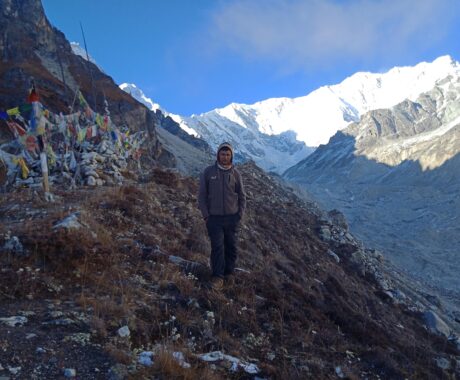
Kanchenjunga North Base Camp Trek

Ganesh Himal Camping Trek
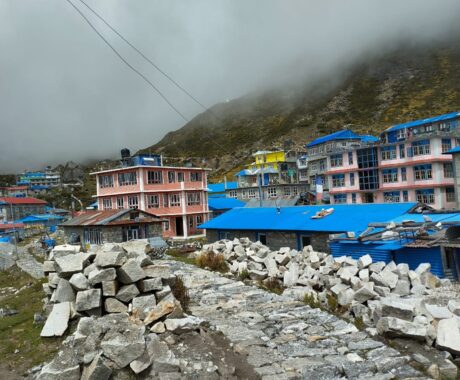
Tamang Heritage, Langtang Valley, Gosaikunda & Helambu Trek
